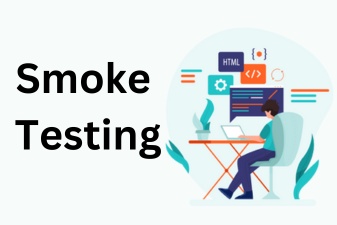Introduction of software testing
The primary objective of testing is to ensure the quality and reliability of a software application or system. By conducting various tests, developers and quality assurance professionals can verify that the software behaves as intended, meets the functional and non-functional requirements, and performs well under different conditions.
What is smoke Testing?
Smoke testing, also known as build verification testing (BVT) or sanity testing, is an initial, high-level form of testing performed on a software build or release candidate. Its purpose is to quickly and superficially verify that the most critical functionalities of the application are working correctly and that the build is stable enough to proceed with further, more comprehensive testing.
The term "smoke testing" originated from hardware testing, where it referred to turning on a device and checking for any signs of smoke, which would indicate a major failure. In the context of software testing, smoke testing involves executing a minimal set of test cases, typically focusing on the core features or critical paths of the application.
Why we use smoke testing?
1. Build Stability Check: Smoke testing ensures that the software build or release candidate is stable enough for further testing. It helps identify major issues or show-stopping defects early in the testing process, allowing the development team to address them before investing more time in comprehensive testing.
2. Critical Functionality Verification: Smoke testing validates the key functionalities of the software to ensure they are working as expected. It helps ensure that the basic features and core components of the application are functioning correctly before proceeding with more detailed testing.
3. Environment and Configuration Validation: Smoke testing also verifies that the software operates correctly in the target environment and with the specified configurations. It helps catch any issues related to compatibility, configuration settings, or deployment procedures.
Tools which is used in smoke Testing?
There are several tools available that can assist in performing smoke testing efficiently. These tools offer features to automate the execution of smoke tests, generate reports, and help identify any critical issues quickly. Here are some commonly used tools for smoke testing:
Selenium: Selenium is a popular open-source tool used for automating web browsers. It allows testers to create and execute automated tests to validate the functionality of web applications. Selenium WebDriver, in combination with a programming language such as Java, Python, or C#, can be used effectively for smoke testing web-based applications.
Jenkins: Jenkins is an open-source automation server that provides a platform for continuous integration and continuous delivery (CI/CD) processes. It enables the scheduling and execution of smoke tests automatically whenever a new build or release is deployed. Jenkins can integrate with various testing frameworks and tools to facilitate smoke testing as part of the build and deployment pipeline.
JUnit: JUnit is a widely used testing framework for Java applications. It provides a framework for writing and executing unit tests. JUnit can be utilized for smoke testing by creating test cases that focus on critical functionalities or key application flows. These test cases can be executed manually or integrated into an automated testing framework.


No comments yet